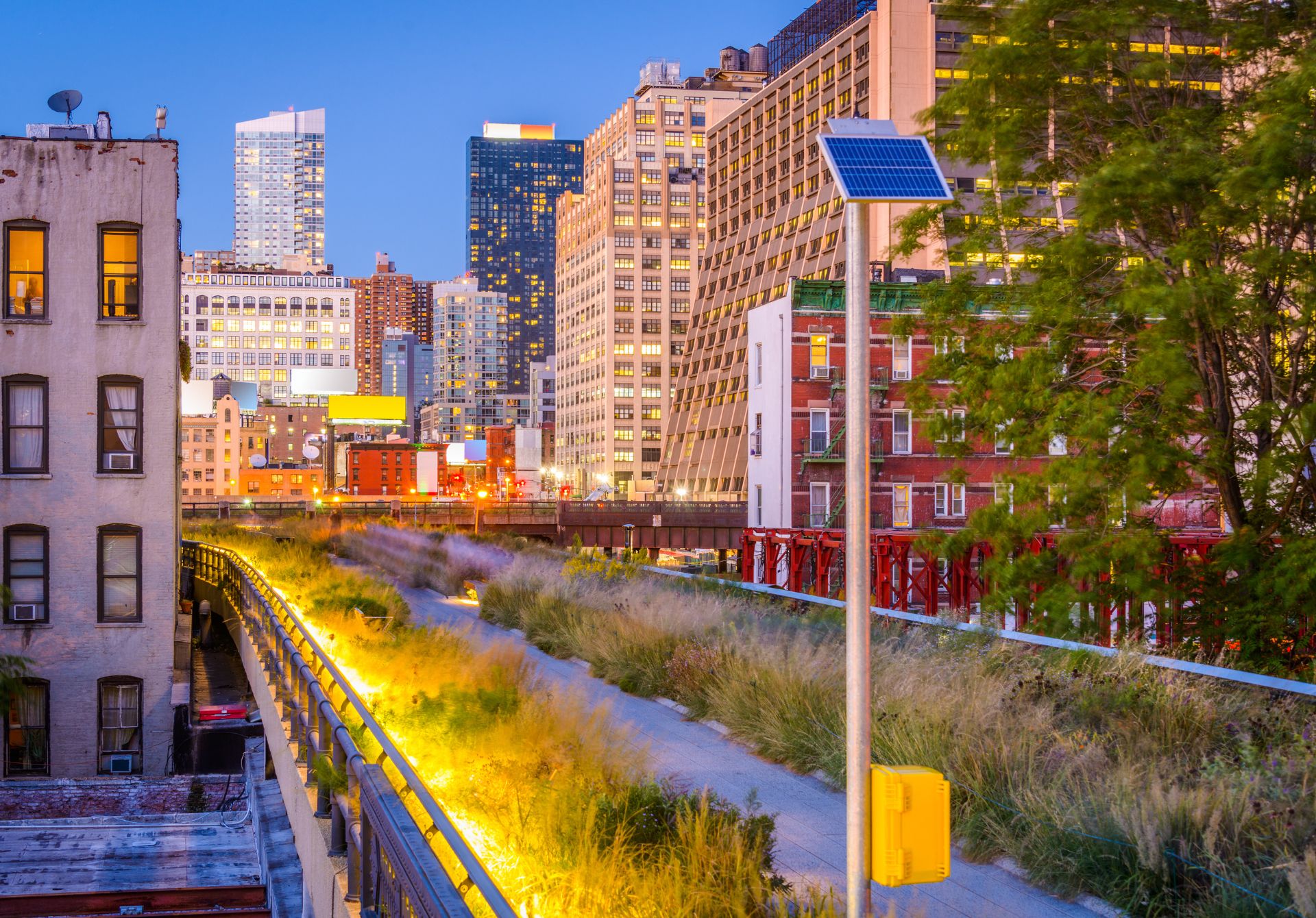The High Line stands as one of New York City’s most innovative urban renewal projects, transforming an abandoned elevated railway into a groundbreaking public park. Built in the 1930s as part of the West Side Improvement Project, the original rail line transported goods through Manhattan’s industrial district, operating until 1980. What could have become another demolished piece of urban infrastructure instead evolved into a model for sustainable urban design that cities worldwide now seek to emulate.
Design and Architecture
Spanning 1.45 miles from Gansevoort Street to West 34th Street, the High Line’s design, led by James Corner Field Operations and Diller Scofidio + Renfro, masterfully integrates the original railway infrastructure with modern landscape architecture. The park features over 500 species of plants and trees, many chosen for their hardiness and seasonal interest. The architects incorporated the original rail tracks into the design, creating a seamless blend of industrial heritage and natural beauty.
The pathways utilize a unique “planking” system that allows vegetation to grow between the concrete slabs, creating an illusion of nature reclaiming the industrial structure. Strategic viewpoints and gathering spaces along the route offer stunning perspectives of the Hudson River and Manhattan’s cityscape.
Environmental Impact
The High Line serves as a model for sustainable urban development, with several key environmental benefits:
- Stormwater Management: The park’s design captures and reuses approximately 80% of all rainfall
- Biodiversity: The park has become a haven for local wildlife, hosting over 110 species of birds
- Heat Reduction: The green space helps mitigate the urban heat island effect in surrounding neighborhoods
Economic and Social Impact
Since its first section opened in 2009, the High Line has generated remarkable economic benefits for New York City. Studies indicate that the park has stimulated over $5 billion in private investment and development in the surrounding neighborhoods. Property values within a 5-minute walk of the park increased by 103% between 2003 and 2011.
The park attracts approximately 8 million visitors annually, making it one of New York’s most popular tourist destinations. Beyond tourism, the High Line has become a vital community space, hosting over 450 public programs and events each year, including educational workshops, art installations, and cultural performances.
The High Line Effect
The success of the High Line has inspired similar projects globally, including:
- The Goods Line in Sydney, Australia
- The 606 in Chicago
- Seoul’s Skygarden
- The Lowline project in New York (proposed underground park)
These projects demonstrate how the High Line has revolutionized urban planning, encouraging cities to reimagine obsolete infrastructure as public space.
Challenges and Controversies
Despite its success, the High Line has faced criticism regarding gentrification in surrounding neighborhoods. Property values have risen dramatically, leading to concerns about displacement of long-time residents and local businesses. This has sparked important discussions about balancing urban renewal with community preservation.
Looking to the Future
The High Line continues to evolve, with recent expansions including the Spur at 30th Street and the Moynihan Connector. These additions further integrate the park into the urban fabric while providing new opportunities for public engagement and environmental education.
The High Line represents more than just a successful park project; it embodies the potential for innovative urban design to transform cities. By preserving historical infrastructure, promoting environmental sustainability, and creating vibrant public spaces, the High Line has set a new standard for urban renewal. As cities worldwide face challenges of modernization and sustainability, the High Line serves as both inspiration and blueprint for reimagining urban spaces in the 21st century.
